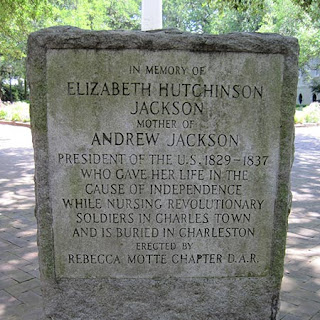Following the war, Vanderhorst spent most of his time in Charleston. He operated a mercantile firm and came to own considerable property around the city.
 |
| Arnoldus Vanderhorst |
Governor. Vanderhorst, the son of Arnoldus Vanderhorst and Elizabeth Simons, was born on March 21, 1748, in Christ Church Parish. He married Elizabeth Raven on March 5, 1771, and they had six children together. A successful planter and slaveholder, Vanderhorst owned a 1,350-acre plantation on Kiawah Island as well as substantial landholdings elsewhere in South Carolina
 |
1790 United States Census
|
Vanderhorst's carrier began in 1772, when he was elected to the Thirtieth Royal Assembly by Christ Church Parish. As the Revolutionary War approached, he served on the Committee of Ninety-Nine (1774) and representing his home parish in the First (1775) and Second (1775–1776) Provincial Congresses. During the war, Vanderhorst served as a militia captain at Haddrell’s Point (1776) and as a colonel under General Francis Marion (1782).
Following the war, Vanderhorst spent most of his time in Charleston. He operated a mercantile firm and came to owned numerous properties around the city. He also became an active figure in civic affairs, serving twice as the mayor for Charleston (1785– 1786, 1791) and as a trustee for the College of Charleston (1785–1791). Still a landowner in Christ Church, he represented that parish in the General Assembly nine times between 1776 and 1794, twice in the House and seven times in the Senate.
| Vanderhorst mansion present day, listed in the National Register of Historic places in 1973 |
| Vanderhost Plantation 1801 |
Vanderhorst’s Federalist connections, led to his election as governor on December 17, 1794. While in office he requested improvement of state jail facilities and sought revision of the criminal code, proposing “instead of the indiscriminate punishment of death …inflict a long or short term of solitary confinement on the offenders, in some measure proportionate to their crime.”(Vanderhorst)
| State Penitentiary 1866 to 1994 |
Vanderhorst served a final term in the House as a representative for St. Philip’s and St. Michael’s Parishes (1798–1799). He died in Charleston on January 29, 1815, and was buried at St. Michael’s Churchyard.
 |
| Arnoldus Vanderhorst headstone |
| St. Michael's Episcopal Church |


















